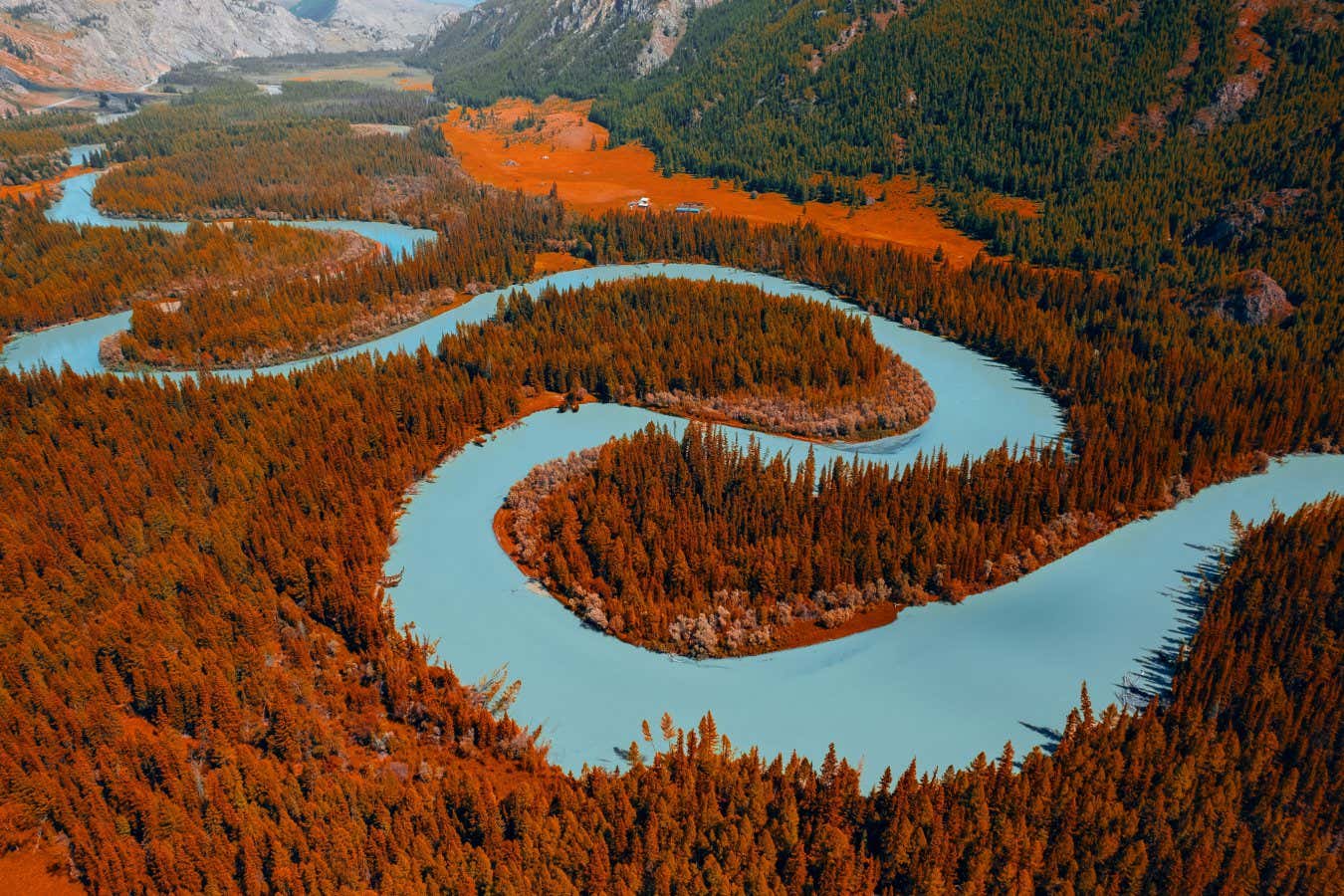
Rivers such as the Chuya in Russia can be a source of carbon dioxide and methane
Parilov/Shutterstock
Rivers around the world are leaking ancient carbon back into the atmosphere. The finding has taken scientists by surprise and suggests human activities are damaging the natural landscape far more than first thought.
Researchers already knew rivers released carbon dioxide and methane as part of the global carbon cycle – the short-term movement of gases that happens as living things grow and decompose. They are thought to emit around 2 gigatonnes of this carbon each year.
But when Josh Dean at the University of Bristol, UK, and his colleagues set out to determine how old this carbon really is, they found that around 60 per cent of global river emissions are from thousands-of-years-old stores.
The team used radiocarbon dating to assess the age of carbon and methane released from more than 700 river segments across 26 countries.
“What really surprised us, when we compiled all the data that we could get, was that as much as half [of the carbon being released] could be coming from these much, much older carbon stores,” says Dean. “There’s a sort of continuous leak, or sideways flow, of these older carbon stores.”
Ancient carbon is trapped in rocks, peat bogs and wetlands. The findings suggest that as much as 1 gigatonne of it is being released back into the atmosphere each year through rivers. That means plants and soils are probably removing around 1 gigatonne more CO₂ from the atmosphere each year than first thought, to counteract this impact.
“This is the first global synthesis of how old CO₂ emissions from rivers are, which is pretty cool,” says Taylor Maavara at the Cary Institute of Ecosystem Studies in Millbrook, New York.
The pressing question now is why rivers are releasing so much ancient carbon. It could be due to climate change and other human activities disrupting the natural landscape, says Dean, pointing out that the carbon being released by rivers seems to have been “getting older” since the 1990s.
“There is a possibility that we’re disturbing these long-term carbon stores, and so, as a result, we’re seeing more old carbon coming out through this pathway,” he says.
For example, rising temperatures caused by climate change could be triggering the release of carbon from thawing permafrost, or accelerating the rate of rock weathering. Other activities, such as the draining of peatlands or drying out of wetlands, could also be contributing. Dean stresses that more work is needed to determine the extent to which human activity is driving this process, and how the release of carbon is changing over time.
This is an urgent research question, he says. “If we think that we are storing old carbon in these reservoirs, but we’re not, that’s really important to know,” he says. The findings will have implications for how nations draw up their climate plans, by, for example, determining how much they rely on the natural landscape to remove ongoing CO₂ emissions.
“This work raises interesting questions about how and to what degree that ancient carbon can be managed,” says Scott Tiegs at Oakland University in Rochester Hills, Michigan, adding that minimising climate change is likely to be important for preventing the release of CO₂ and methane from ancient stores.
Topics:
Source link : https://www.newscientist.com/article/2482872-rivers-are-leaking-ancient-carbon-back-into-the-atmosphere/?utm_campaign=RSS%7CNSNS&utm_source=NSNS&utm_medium=RSS&utm_content=home
Author :
Publish date : 2025-06-04 16:00:00
Copyright for syndicated content belongs to the linked Source.